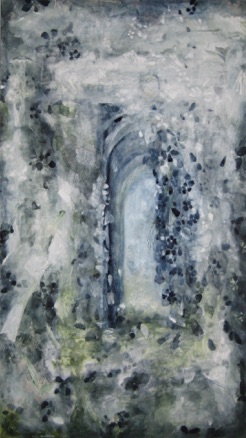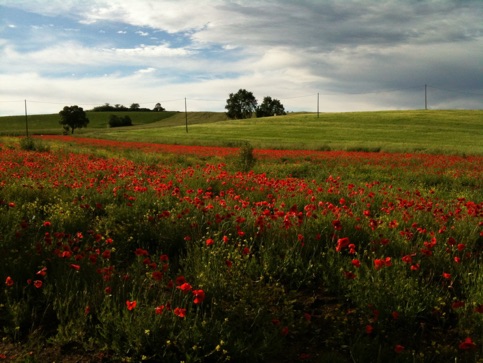Courses in Italy
Drawing to See
Seeing through Painting
2024
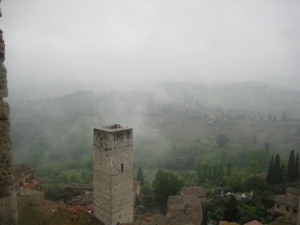
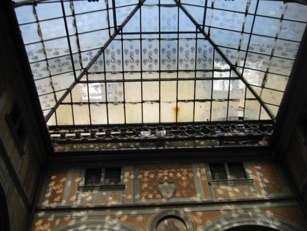
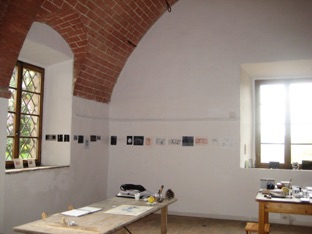
Drawing to See: http://www.spannocchia.org/event/drawing-to-see/
Sketching in the garden at Spannocchia
Studio at Spannocchia
Sketching in the early morning at San Gimignano
Drawing at the Villa at Spannocchia
Sketching at Santissima Annunziata in Florence
Textbook: An Artist’s Handbook: Materials and Techniques, Margaret Krug
Drawing to See
May 15 - 27, 2023
Registration and tuition due by January 15, 2023
Tuition: $3500.00
Observe the world more deeply by drawing what you see. Learn the skills and devices to draw what you see in the natural and built environment. Discuss the roots of drawing and its changing and enduring function while viewing historical examples. Consider the broad definition of what a drawing can be. In response to the observation of the visual material presented, work with a variety of early techniques and materials as well as experimental materials and processes.
Each material has a unique identity and response to your motive and action. Working with silver point on paper prepared with China white can demand a slow, deliberate response to visual material, and it can result in great delicacy in the nuances of light and dark. Experimenting with iron gall ink (used by Leonardo da Vinci and Rembrandt van Rijn), allows for exquisite precision as well as rapid, loosely expressive marks and planes to articulate the fluctuating environment.
Work in relationship with the materials by letting them inform you on how to use them to represent your experience of seeing. Create notes, sketches, studies, and preliminary cartoons for more finished works as well as exploring and expanding on doodles to produce a series of works with a conceptual framework. Experimenting with erasing, tearing, reassembling, and combining media and techniques or just by switching to a new, unfamiliar medium may lead to revelatory breakthroughs in your creative vision.
While working in grey, black, and white or monochromatically and then with handmade watercolor, you will explore the vocabulary of drawing, including line, delicate gradation, volume, composition, movement, perspective, color, light, the element of time, and abstract motifs. Line, color and light will translate into experience and thought.
Day trips with art historical discussions to sites such as San Gimignano, the Pinacoteca Nazionale in Siena, and the Etruscan Guarnacci Museum in Volterra (as well as observation of the natural surroundings at Spannocchia), will encourage the blending of history with the present as you draw to see.
Blog post for Drawing to See 2016: https://margaretkrug.wordpress.com/2016/08/02/drawing-to-see/
Enrollment is limited to 7 students. Prior art instruction is required. For an application please contact Margaret Krug at margaret.krug@gmail.com or 646 232 6808. Registration and tuition due by January15, 2023.*
Painting on Panels
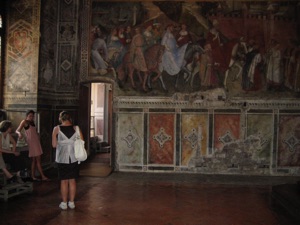

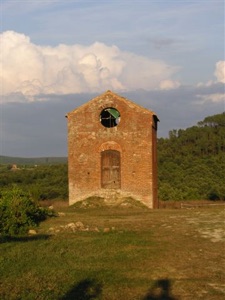
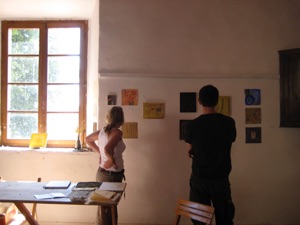
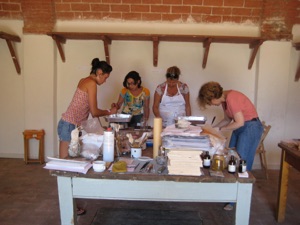
Studying paintings at Museo Civico in Siena
Housing in the Villa at Spannocchia
Studio at Spannocchia
Visit to San Galgano to create painted sketches
Painting on Panels: https://www.spannocchia.org/event/painting-on-panels-with-margaret-krug-2/
Textbook: An Artist’s Handbook: Materials and Techniques, Margaret Krug
Painting on Panels
June 15 - June 27, 2022
Registration and tuition due by January 15, 2022
Tuition: $3500.00
Focus on traditional painting methods and their contemporary application including encaustic used in the Fayum region of ancient Egypt, egg tempera from early Renaissance Siena and oil painting from Renaissance Venice. Prepare small wood panels with traditional gesso ground. Produce paint by combining dry pigments with beeswax, egg, milk glue, gum arabic or oil. Using exercises from An Artist’s Handbook, technical proficiency is encouraged through copying techniques employed in master paintings, while gaining an understanding of color, composition and construction of a pictorial space, and through creating original work from observed reality using the same methods. Create a set of technical examples to use as visual reference as well as a cohesive body of original work. Day trips, with art history lectures and sketchbook exercises, to museums and other sites in Siena, Florence and surrounding towns enable students to examine the cultural/historic context of methods and concepts presented in the course. Critiques and thematic assignments encourage access to personal vision.
Blog post for Painting on Panels 2017: https://margaretkrug.wordpress.com/2018/11/07/painting-on-panels-at-tenuta-di-spannocchia-in-italy/
Enrollment is limited to 7 students. Prior art instruction is required. For an application please contact Margaret Krug at margaret.krug@gmail.com or 646 232 6808. Registration and tuition due by January 15, 2022.
*Participants reside in a private room with bath in the villa of Spannocchia, about twelve miles southwest of Siena, Italy. The villa is built into a massive castle that dates back to the early Middle Ages. The villa is fully equipped with all the necessary facilities, including a library, studios, laboratory, museum and swimming pool.
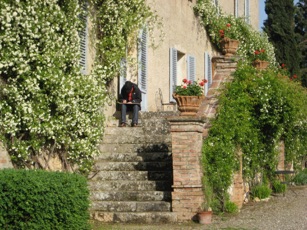
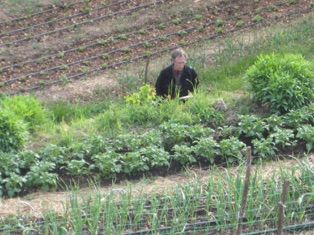
Studio at Spannocchia
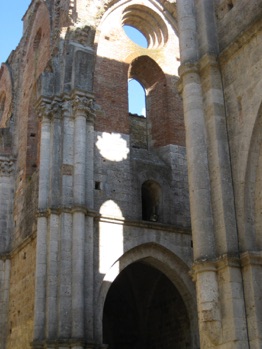
Sketching at San Galgano
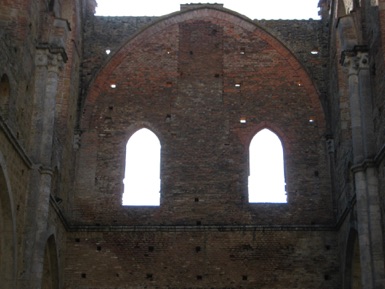
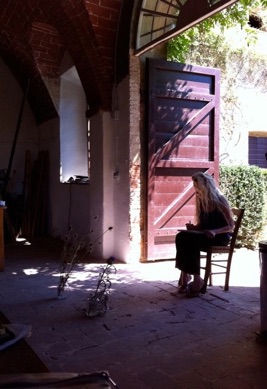
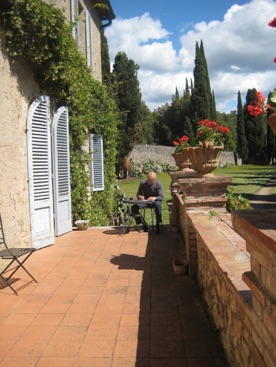
Studio
Villa

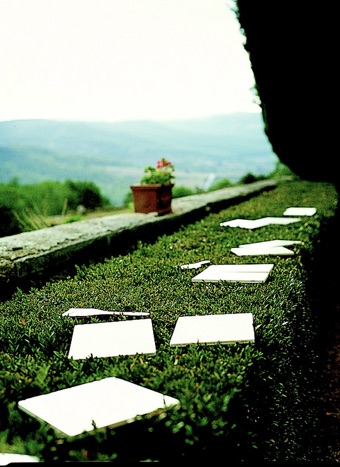
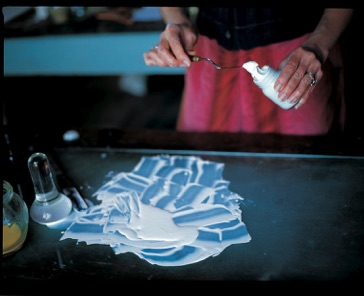
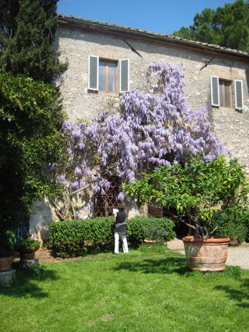
Wood panels prepared with true gesso
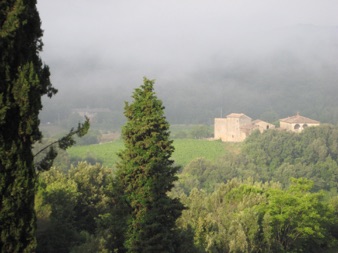
Studying a sinopia at Santa Croce in Florence
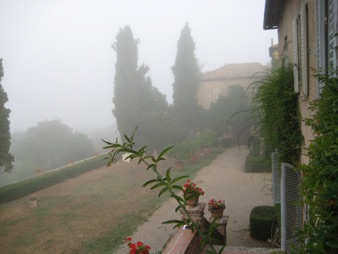
Typical daily lunch, just for us, at Castello di Spannocchia
Drawing to See
Textbook: An Artist’s Handbook: Materials and Techniques, Margaret Krug
Drawing to See
Seeing through Painting
September 17 - 29, 2024
Registration and tuition due by February 1, 2024
Tuition: $3500.00
Enrollment is limited to 7 students. Prior art instruction is required. For an application please contact Margaret Krug at margaret.krug@gmail.com or 646 232 6808. Registration and tuition due by February 1, 2024.

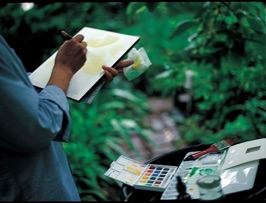
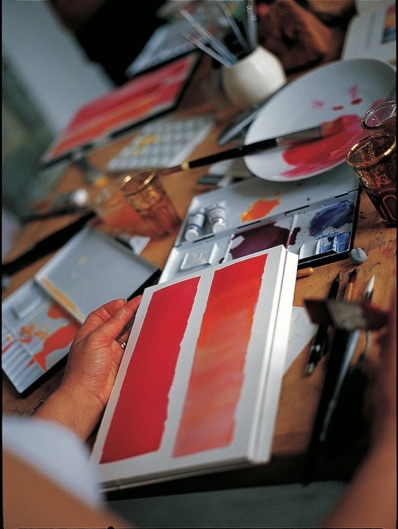
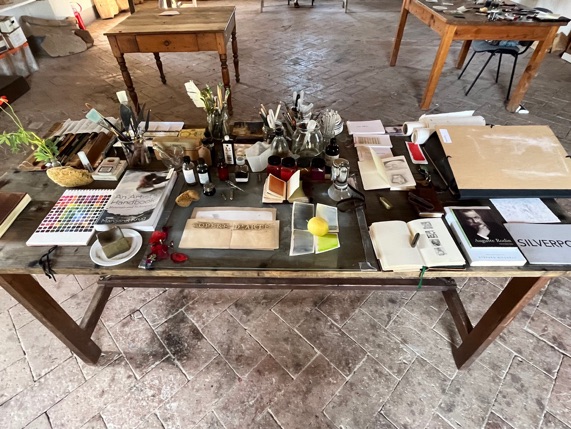
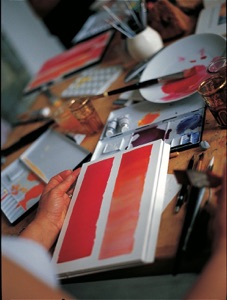
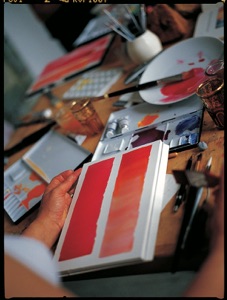
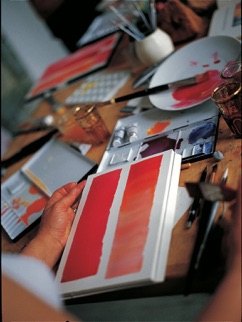
Drawing to See, Seeing through Painting follows the trajectory of An Artist’s Handbook: Materials and Techniques to study the practice of drawing and painting what you see.
To begin, observe the world more deeply by drawing what you see in the natural and built environment. Discuss the roots of drawing and its changing and enduring function while viewing historical examples. Consider the broad definition of what a drawing can be. In response to the observation of the visual material presented, work with a variety of early techniques and materials as well as experimental materials and processes.
Each material has a unique identity and response to your motive and action. Working with silverpoint can demand a slow, deliberate response to visual material, and it can result in great delicacy in the nuances of light and dark. Experimenting with iron gall ink (used by Leonardo da Vinci and Rembrandt van Rijn) allows for exquisite precision as well as rapid, loosely expressive marks and planes to articulate the fluctuating environment.
Work in relationship with the materials by letting them inform you on how to use them to represent your experience of seeing. Create notes, sketches, studies, and preliminary cartoons for more finished works as well as exploring and expanding on doodles to produce a series of works with a conceptual framework. Experimenting with erasing, tearing, reassembling, and combining media and techniques or just by switching to a new, unfamiliar medium may lead to revelatory breakthroughs in your creative vision.
While working in grey, black, and white or monochromatically and then with handmade watercolor, you will explore the vocabulary of drawing, including line, delicate gradation, volume, composition, movement, perspective, color, light, the element of time, and abstract motifs. Line, color and light will translate into a universe of experience and thought.
Move into full color. Paint with veils of color and let the study of drawing inform and influence a brief study of traditional painting methods and their contemporary application, touching on tempera (egg tempera from early Renaissance Siena, casein tempera, distemper) and the oil painting method first practiced during the Venetian Renaissance. Produce handmade paint by combining dry pigments with egg, milk glue, animal glue, gum Arabic or oil. Use exercises from An Artist’s Handbook to encourage technical proficiency through employing techniques used in master paintings, while gaining an understanding of color, composition and construction of a pictorial space. Create original painting sketches from observation using the same methods.
Day trips with art historical discussions and sketchbook exercises in sites such as San Gimignano, the Pinacoteca Nazionale in Siena, and the Etruscan Guarnacci Museum in Volterra (as well as observation of the natural surroundings at Spannocchia) will enable an examination of the cultural/historic context of methods and concepts presented in the course and encourage the blending of history with the present as you draw and paint to see. Daily critiques, prompts and thematic assignments encourage access to personal vision.
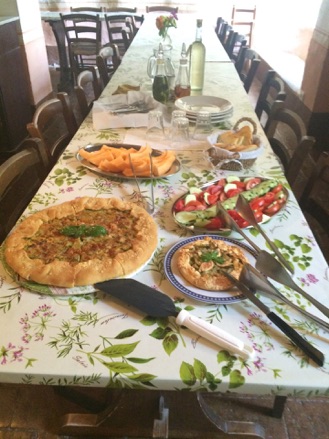

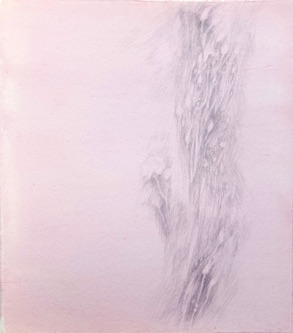
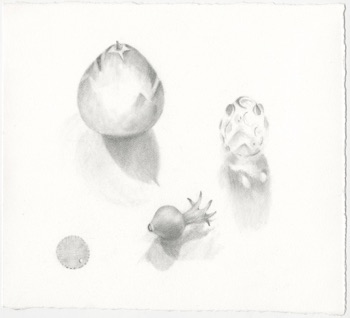
distemper and oil paint on linen
watercolor washes
watercolor
Drawing to See, Seeing through Painting Studio: Play at full volume
